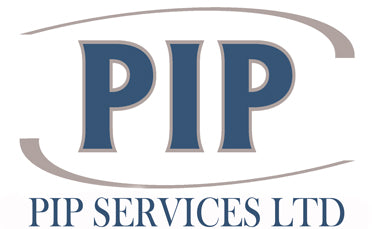In the construction industry, safety is not optional, it's critical. Construction sites are inherently hazardous environments with a dynamic mix of workers, heavy machinery, high-risk tasks, and ever-changing site conditions.
A thorough risk assessment is the cornerstone of any effective safety strategy. Whether you're managing a residential build, a commercial renovation, or a large-scale infrastructure project, understanding and mitigating risk is essential to protecting lives, maintaining compliance, and keeping projects on schedule.
This blog post provides a comprehensive guide on how to conduct a thorough construction site risk assessment, breaking down each step and offering best practices to ensure safety and regulatory adherence.
What Is a Construction Site Risk Assessment?
A risk assessment is a systematic process used to identify hazards, evaluate risks, and implement control measures to reduce or eliminate those risks. On a construction site, this involves assessing activities, tools, materials, and environmental factors that could cause harm to workers or the public.
It forms part of a broader risk management plan and is a legal requirement in most countries under occupational health and safety regulations (e.g. OSHA in the U.S., HSE in the U.K., WHS in Australia).
Why Risk Assessments Are Critical in Construction
Legal Compliance: Avoid fines and shutdowns by meeting local regulatory safety requirements.
- Accident Prevention: Proactively identify potential hazards before they cause harm.
- Cost Control: Reduce costly incidents, legal claims, and delays.
- Reputation Management: A safe site builds trust with clients, subcontractors, and insurers.
- Worker Morale: When workers see safety being prioritized, job satisfaction and productivity increase.
When to Conduct a Risk Assessment
- Before starting a project (during planning/design phase).
- When new tasks or equipment are introduced.
- After incidents or near misses.
- When site conditions change significantly.
- Periodically as part of routine inspections.
Step-by-Step Guide to Conducting a Risk Assessment
Step 1: Identify Hazards
Start by walking the site and consulting plans, task breakdowns, and historical data. Consider:
- Physical Hazards: Machinery, heights, trip hazards.
- Chemical Hazards: Exposure to asbestos, solvents, or fuels.
- Biological Hazards: Mould, insects, contaminated soil.
- Ergonomic Hazards: Repetitive motion, awkward positions.
- Environmental Hazards: Noise, vibration, weather conditions.
Step 2: Determine Who Might Be Harmed and How
List all people at risk:
- Workers (skilled/unskilled).
- Subcontractors.
- Site visitors.
- Public (especially in urban sites).
Detail how each group might be exposed to identified hazards. Consider vulnerable individuals, such as young workers or those with disabilities.
Step 3: Evaluate the Risks and Prioritize
For each hazard, assess:
- Likelihood of occurrence (rare to very likely).
- Severity of potential injury (minor to fatal).
Use a risk matrix to assign a risk level (low, medium, high, critical). This helps prioritize which hazards need urgent attention.
Step 4: Implement Control Measures
Apply the hierarchy of controls to reduce risks:
- Eliminate: Can the hazard be removed?
- Substitute: Can a safer method or material be used?
- Engineer Controls: Guardrails, ventilation, noise barriers.
- Administrative Controls: Training, signage, schedules.
- PPE: Helmets, gloves, safety boots (least effective if used alone).
Example: For working at height, you might use scaffolding (engineering control), train workers (administrative), and require harnesses (PPE).
Step 5: Record and Communicate Findings
Create a written risk assessment document including:
- Identified hazards.
- Risk ratings.
- Control measures.
- Responsible persons.
- Review dates.
Share this document with your workforce, site supervisors, and safety officers. Use briefings and toolbox talks to keep everyone informed.
Step 6: Monitor and Review Regularly
Risk assessments must be living documents. Reassess:
- If an incident occurs.
- When a task or crew changes.
- At key project milestones.
- Periodically (e.g. weekly or monthly).
Use feedback loops (e.g. incident reports, audits, worker suggestions) to improve your safety plan continuously.
Common Risk Assessment Pitfalls and How to Avoid Them
| Mistake | Solution |
| Treating it as a box-ticking exercise | Involve frontline workers and safety professionals |
| Using generic templates | Tailor each assessment to the specific site and tasks |
| Ignoring minor hazards | Small risks can lead to serious injuries over time |
| Not updating assessments | Schedule regular reviews and adapt as needed |
| Failing to act on findings | Assign clear responsibilities for implementing controls |
Tools and Technology to Enhance Risk Assessments
Modern construction risk assessments are evolving with technology:
- Digital forms & mobile apps.
- Drones for aerial inspections.
- 3D modelling/BIM to identify spatial hazards early.
- Wearables to monitor worker exposure and fatigue.
- AI-based safety prediction tools.
Using these tools can streamline assessments, improve accuracy, and provide real-time visibility into site safety.
Final Thoughts
A thorough risk assessment isn’t just a legal requirement, it’s a fundamental pillar of responsible project management. It protects your team, your timeline, and your bottom line. Investing the time and resources to conduct proper assessments can pay off exponentially in avoided accidents, improved productivity, and a stronger safety culture.
By taking a proactive and structured approach, construction leaders can create safer, smarter worksites, one assessment at a time.
You can learn more about health and safety in construction in our blog post Construction Site Health & Safety Explained.
Why choose PIP Services for your health and safety consultancy?
We’re dedicated to providing the highest level of advice on all Health and Safety related matters and will assist companies in meeting their obligations. We offer a wide range of Health & Safety Services for a variety of clients. We represent many companies and deal with all of their Health & Safety matters.
We’re also an accredited CITB, NEBOSH, IOSH, IWFM & CITB training provider, as well as a ProQual-approved NVQ centre.
We are rated 4.9/5 on Trustpilot, and you can read our reviews here. If you would like to speak to us about your training needs, please get in touch using the button below.

